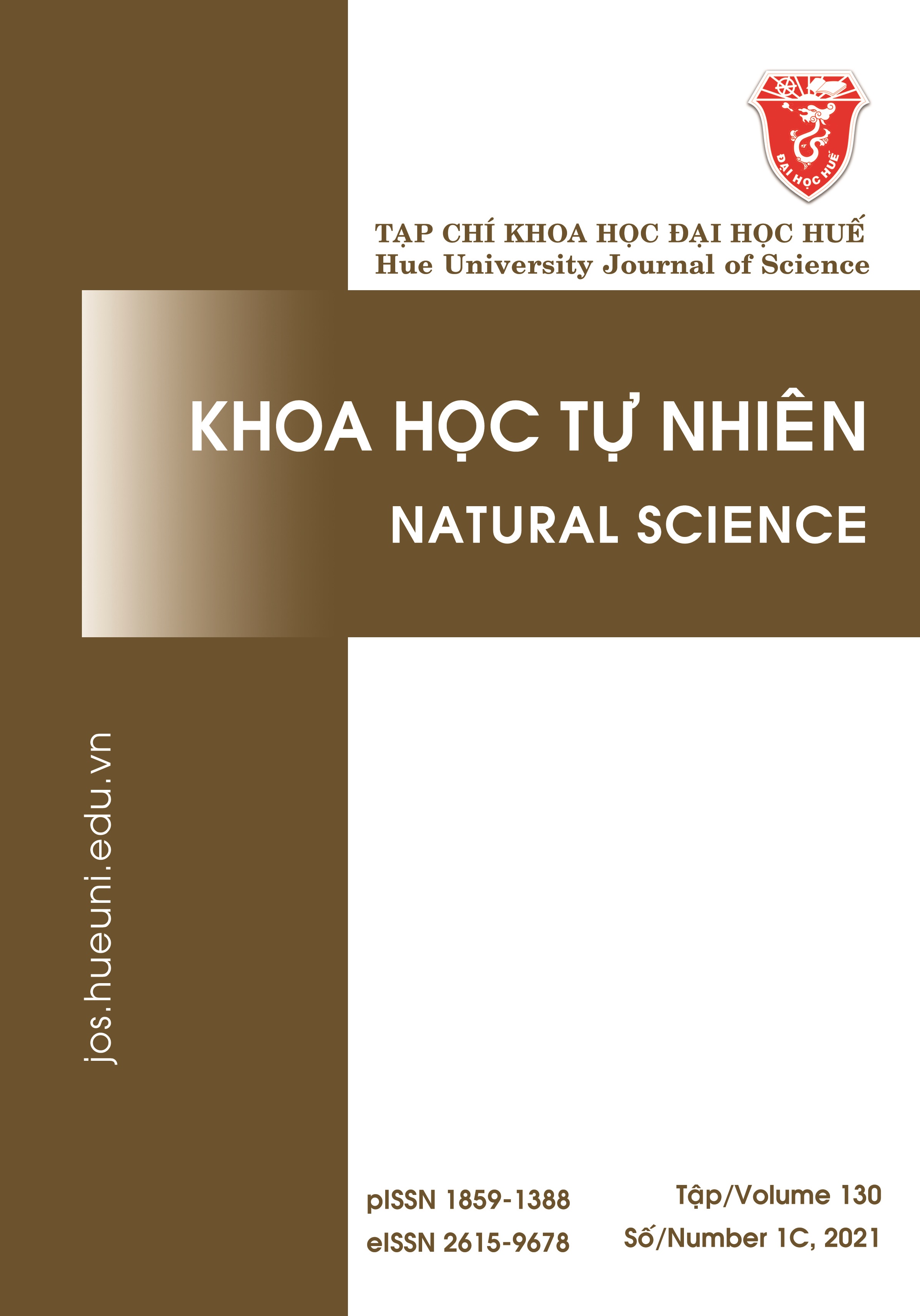Abstract
Gynostemma pentaphyllum (Thunb.) Makino (Jiaogulan) is a traditional medicinal herb belonging to the Cucurbitaceae family. G. pentaphyllum grows widely in Southern China, Japan, Korea, and Vietnam. The essential bioactive components of Jiaogulan are saponin glycosides (gypenosides) and antioxidants. Jiaogulan exhibits bioactive activities such as anticancer, antioxidant, cholesterol-reducing agent, immunopotentiation, and others. In this study, the primary callus of Jiaogulan was used as a material to evaluate the influence of the culture medium on the induction and growth of secondary calli. The results reveal that the callus cultured on the MS medium supplemented with 2.0 mg/L kinetin and 0.5 mg/L indole-3-butyric acid has the best growth ability, high rate of secondary callus induction (100%), and good callus quality for suspension culture. The concentration of gypenoside and Rb1 in callus is 36.298 and 0.009 mg/g dry weight. The gypenoside concentration of callus is lower than that of leaves (65.58%) and almost similar to that of stems (92.38%) from natural samples. The suitable solvent for the extraction of gypenoside is methanol. The obtained callus will be used as material for cell suspension culture in further studies.
References
- Cui WY, Jin Y, Liu H, Zu ML, Zhai XF, Yang C, et al. Dammarane-type saponins from Gynostemma pentaphyllum and their cytotoxicities. Natural Product Research. 2020:1-9. DOI: https://doi.org/10.1080/14786419.2020.1723093
- Lãm BĐ, Tình NT, Duy NV, Bảo NV, Hiền LV, Bình NX. Nghiên cứu khả năng nhân giống cây Giảo cổ lam (Gynostemma pentaphyllum Thunb) bằng phương pháp in vitro. Tạp chí Nông nghiệp và Phát triển Nông thôn. 2015;15:249-56.
- Chen PY, Chang CC, Huang HC, Zhang LJ, Liaw CC, Lin YC, et al. New Dammarane-type Saponins from Gynostemma pentaphyllum. Molecules. 2019;24(7). DOI: https://doi.org/10.3390/molecules24071375
- Liu F, Ren D, Guo DA, Pan Y, Zhang H, Hu P. Method Development for Gypenosides Fingerprint by High Performance Liquid Chromatography with Diode-Array Detection and the Addition of Internal Standard. Chemical and Pharmaceutical Bulletin. 2008;56(3):389-93. DOI: https://doi.org/10.1248/cpb.56.389
- Liang T, Zou L, Sun S, Kuang X, Wei J, Wang L, et al. Hybrid sequencing of the Gynostemma pentaphyllum transcriptome provides new insights into gypenoside biosynthesis. BMC Genomics. 2019;20(1):632. DOI: https://doi.org/10.1186/s12864-019-6000-y
- Quảng HT, Như LPQ, Trí NM, Nhân LTT, Cương LN, Hải TTH, et al. Nhân giống cây Giảo cổ lam (Gynostemma pentaphyllum (Thunb.) Makino) bằng nuôi cấy callus. Tạp chí Khoa học, Đại học Huế: Khoa học tự nhiên. 2019;128(1E):59-68. DOI: https://doi.org/10.26459/hueuni-jns.v128i1E.5406
- Yue W, Ming QL, Lin B, Rahman K, Cheng Z, Han T, et al. Medicinal plant cell suspension cultures: Pharmaceutical applications and high-yielding strategies for the desired secondary metabolites. Critical reviews in biotechnology. 2014;36:1-18. DOI: https://doi.org/10.3109/07388551.2014.923986
- Lộc NH. Nuôi cấy mô và tế bào thực vật-Các khái niệm và ứng dụng. Huế: NXB Đại học Huế; 2011.
- Jala A, Patchpoonporn W. Effect of BA NAA and 2,4D on Micropropagation of Tiaogulan (Gynostemma pentaphyllum Makino). International Transaction Journal of Engineering, Management, & Applied Sciences & Technologies. 2012;3(4):363-70.
- Ao Z, Qin Z. Effect of some stress factors on gypenosides accumulation in callus of Gynostemma pentaphyllum. Chinese Journal of Applied & Environmental Biology. 1998 4(2):10-4.
- Zhang H, Wu Q, Liu D. Protoplast culture and plant regeneration from the suspension cells of Gynostemma pentaphyllum (Thumb) Mak. Chiness Journal of Biotechnology. 1995;11(3):207-11.
- Murashige T, Skoog F. A revised medium for rapid growth and bio assays with tobacco tissue cultures. Physiol Plant. 1962;15(3):473-97. DOI: https://doi.org/10.1111/j.1399-3054.1962.tb08052.x
- Hằng NTT, Vân LA, Khiêm ĐV, Cương HV, Hoàng NTP, Huyên PX. Nghiên cứu nhân giống in vitro và sự sinh trưởng phát triển cây giảo cổ lam (Gynostemma pubescens) trong nhà kính. Tạp chí khoa học Đại học Đà Lạt. 2018;8(3):99-112.
- DOI: https://doi.org/10.37569/DalatUniversity.8.3.506(2018)
- Wu Q, Jang M, Piao XL. Determination by UPLC-MS of four dammarane-type saponins from heat-processed Gynostemma pentaphyllum. Bioscience, Biotechnology, and Biochemistry. 2014;78(2):311-6. DOI: https://doi.org/10.1080/09168451.2014.882751
- Zhao TT, Shin KS, Choi HS, Lee MK. Ameliorating effects of gypenosides on chronic stress-induced anxiety disorders in mice. BMC Complement Altern Med. 2015;15:323. DOI: https://doi.org/10.1186/s12906-015-0856-4
- Chang CK, Chang KS, Lin YC, Liu SY, Chen CY. Hairy root cultures of Gynostemma pentaphyllum (Thunb.) Makino: a promising approach for the production of gypenosides as an alternative of ginseng saponins. Biotechnology Letters. 2005;27(16):1165-1169. DOI: https://doi.org/10.1007/s10529-005-8653-7
- Luyến BT, Nhung PTT, Quỳnh NT, Thư ND, Cải NT. Định lượng saponin toàn phần trong dược liệu giảo cổ lam (Gynostemma pentaphyllum) 5 lá và 7 lá thu hái tại Thái Nguyên bằng phương pháp đo quang. Tạp chí Khoa học và Công nghệ Đại học Thái Nguyên. 2019;207(14):187 - 94.
- Shi MR, Li H, Bai G, Xiao YP. Quantification of five saponins in Gynostemma pentaphyllum (Thunb.) Makino by HPLC. Journal of Science and Technology of Food Industry (China). 2015;36(2):49-56.
- Gnoatto SCB, Schenkel EP, Bassani VL. HPLC method to assay total saponins in Ilex paraguariensis aqueous extract. Journal of the Brazilian Chemical Society. 2005;16:723-5. DOI: https://doi.org/10.1590/S0103-50532005000500007
- Liu F, Ma N, He C, Hu Y, Li P, Chen M, et al. Qualitative and quantitative analysis of the saponins in Panax notoginseng leaves using ultra-performance liquid chromatography coupled with time-of-flight tandem mass spectrometry and high performance liquid chromatography coupled with UV detector. Journal of Ginseng Research. 2018;42(2):149-57. DOI: https://doi.org/10.1016/j.jgr.2017.01.007
- Park IS, Kang E, Kim N. High-Performance Liquid Chromatographic Analysis of Saponin Compounds in Bupleurum falcatum. Journal of chromatographic science. 2000;38:229-33. DOI: https://doi.org/10.1093/chromsci/38.6.229

This work is licensed under a Creative Commons Attribution-ShareAlike 4.0 International License.
Copyright (c) 2021 Array




